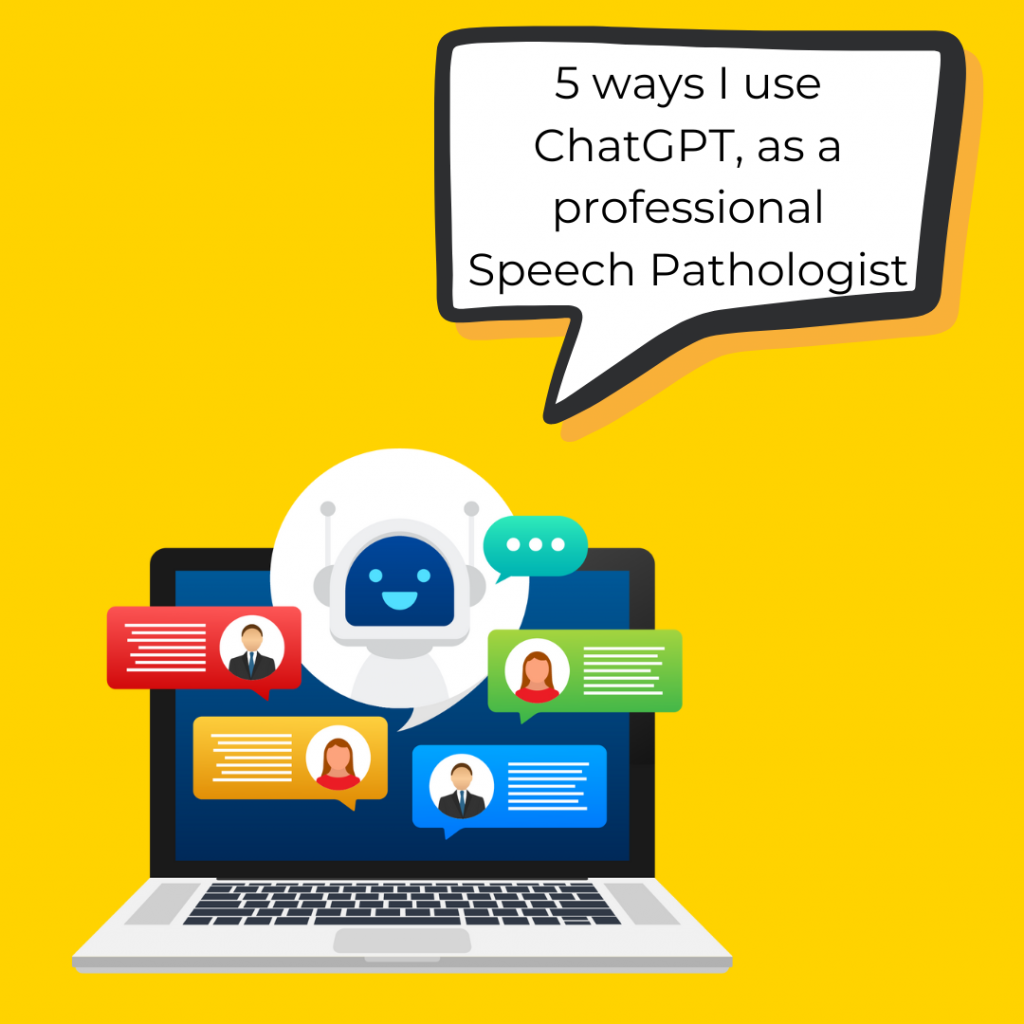In my 11 years as a speech pathologist, integrating technology into our practice has proven beneficial to myself, my clients, and my colleagues. ChatGPT, in particular, has become indispensable in my toolkit.
It is important to understand that ChatGPT cannot replace the expertise of a speech pathologist. For example, if I want to target the sound /r/ with a client, ChatGPT will give me words like corn, mother, and lard. None of those words have the sound /r/ in Australian English. ChatGPT cannot replace the evidence-based knowledge and skills of a professional certified speech pathologist. It is useful though.
Here, I outline five ways I leverage this tool, with examples illustrating its practical application.
1. Creating Targets for Speech Practice
Setting precise targets is fundamental in speech therapy. ChatGPT assists me by generating custom speech practice materials. For example, I provided ChatGPT with a context involving a 9-year-old girl working on ‘l’ blends in connected speech, aiming for 80% accuracy. I requested a poem about a penguin in Antarctica eating ice cream, incorporating ‘l’ blends like pl, bl, cl, gl. The outcome, “Cool Penguin’s Creamy Dream,” made the therapy session fun and focused. It’s crucial to clearly define your goals to ensure the output meets your client’s needs.
2. Simulating Client-Specific Social Scenarios
Personalising therapy is critical. For a client anxious about communicating at a large family event, I used ChatGPT to create ten social scenarios tailored to their context. This method allows clients to prepare and gain insights into potential interaction challenges, with continuous client feedback ensuring the scenarios remain relevant and beneficial.
3. Streamlining Data Organization
Managing data can be daunting. ChatGPT simplifies this with step-by-step instructions for tools like Google Sheets. I receive customised guidance by providing context and objectives, making data management more intuitive. This has been especially helpful for infrequent tasks, making them as familiar as my regular therapy duties.
4. Generating Materials for Writing Tasks with ChatGPT
To develop a writing group for high school students, I utilised ChatGPT’s “The Writing Revolution”[1] knowledge to generate activities on simple sentences. The process involved an iterative refinement of the worksheets, with ChatGPT handling the initial creation. This collaborative effort, which took about 10-15 minutes, highlights the tool’s capacity to support but not substitute professional expertise.
5. Planning and Customizing Recipes
While not directly related to speech pathology, ChatGPT’s ability to streamline meal planning has been personally beneficial. Inputting available ingredients yields recipes with precise measurements, simplifies cooking, and helps me stay prepared for professional responsibilities.
[1] Hochman, J. C., & Wexler, N. (2017). The Writing Revolution: A Guide to Advancing Thinking Through Writing in All Subjects and Grades. Jossey-Bass.

